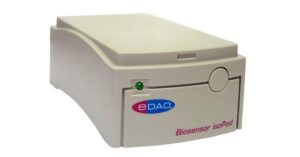
2-electrode Potentiostats (EPU352 Biosensor isoPod™ with USB)
A two-electrode potentiostat uses a working and counter electrode. A disadvantage of this arrangement is that if the electrodes are further apart then the resistance between them increases and the current decreases, so reproducible electrochemical results can be hard to achieve if electrode surface area, or separation distance, varies. Polarographic oxygen electrode meters are examples of two-electrode potentiostats. Our two-electrode potentiostats are listed below: -EPU352 USB Biosensor isoPod -EPU354 dO2 isoPod -EP352 Biosensor Isopod (for use with ER466 Potentiostat or e-corder systems) -EP354 dO2 isoPod (for use with ER466 Potentiostat or e-corder systems)
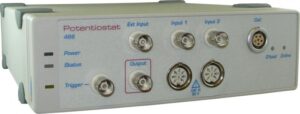
3-electrode Potentiostats (ER466 Integrated Potentiostat System)
The 3-electrode potentiostat is typically what people refer to when they say a 'potentiostat'. With a '3-electrode' potentiostat the potential is monitored between a reference and working electrode that are both in close proximity, while the potential of a relatively distant auxiliary electrode is adjusted. The current flow is measured between the working and auxiliary electrodes. This has the advantage that no current actually passes through the reference electrode, so there is no electrolytic reaction occurring there, and thus the reference electrode potential can remain constant throughout the experiment. A consequence of this arrangement is that the potential between the working and auxiliary electrodes (the 'compliance' potential, which is usually not reported) can be many times the applied potential (depending on electrolyte resistance and distance between the electrodes). By attaching the potentiostat reference and auxiliary inputs to the same 'counter' electrode a three-electrode potentiostat can be used as a two-electrode potentiostat. All the potentiostats below can be operated as 3 electrode potentiostats. -ER466 Integrated Potentiostat (±100 mA to ±20 nA, 16 bit resolution each range) -ER467 High Current Potentiostat (±1.0 A to ±20 nA, 16 bit resolution each range) -EA164 QuadStat (±10 mA to ±20 pA, 16 bit resolution each range) -EA163 Potentiostat (±100 mA to ±20 nA, 16 bit resolution each range) -EA362 Dual Picostat (±10 µA to 1 pA, 16 bit resolution each range) - SP100 Zive Potentiostat (±1 A to ±100 nA,16 bit resolution each range)
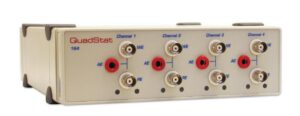
Bipotentiostats and Multiple Working Electrodes (EA164 QuadStat)
A bipotentiostat system features a reference and auxiliary electrode, and two working electrodes, whose potentials can be independently adjusted while the current flowing through them is monitored. This principle can be extended to any number of working electrodes, for example the EA164 QuadStat controls up to four working electrodes. Typically the potential between the reference and first working electrode is controlled and the potentials of subsequent working electrodes are offset relative to the first electrode to achieve the desired effect. These potentiostats are often used in 'electrochemical nose' systems.
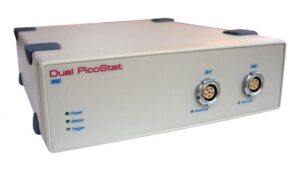
4-electrode Potentiostats (EA362 Dual Picostat)
The term '4-electrode potentiostat' is usually reserved for a device with two reference ('voltage sensing') electrodes and two working ('current passing') electrodes. The potential difference between the two reference electrodes is controlled while the current flow between the two working electrodes is monitored. These potentiostats are commonly used to measure the electrochemical current flow across a membrane separating two compartments, or across the interface of two immiscible solvents (an ITES experiment). The EA362 Dual Picostat can be used in 4-electrode mode. The EA167 Dual Reference Adaptor can convert most three electrode potentiostats into a 4-electrode system.
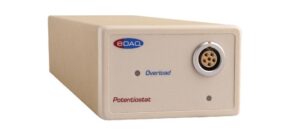
Galvanostats (EA163 Potentiostat)
Some potentiostats can be operated as galvanostats. In this case the current flow is controlled while the potential is monitored. Below are the potentiostats that work as Galvanostats: -EA163 Potentiostat -ER466 Integrated Potentiostat -ER467 High Current Potentiostat -SP100 Zive Potentiostat
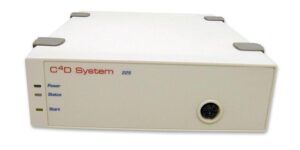
Contactless Conductivity Detectors C4D (ER225)
eDAQ supplies Capacitively-Coupled Contactless Conductivity Detectors (C4D) which can be used for capillary electrophoresis, microchip electrophoresis, chromatography and flow injection analysis. Have a look at the videos and application notes. Read the introduction to C4D. Put together your C4D system by selecting: One C4D unit, depending on which software you wish to use and how many C4D channels are required, and One or more C4D headstage/platform, depending on your application and which capillary/tubing/chip is being used. All the C4D headstages/platforms work with each of the C4D units.

USB isoPods (EPU452)
USB isoPods attach directly to a computer USB port or to a USB hub. Use eDAQ Pod-Vu software to log and graph signals directly to a Windows XP or later computer, or you can write you own special pupose software using LabView, C++, etc to communicate with these isoPods. When using more than four USB isoPods on the one computer a good quality powered USB hub is required (eg Belkin model F4U041 or similar). -Quad Multi Function isoPod with USB Four channel; user-configurable; for recording pH, temperature, conductivity, dissolved oxygen and biosensors -Quad pH Amp with USB Four channel pH meter for recording from pH, ion selective and ORP electrodes -Dissolved Oxygen isoPod with USB a compact dissolved oxygen meter for recording dissolved oxygen using polarographic (Clark) electrodes -pH/ISE isoPod with USB pH meter for recording from pH, ion selective and ORP electrodes -Nitric Oxide isoPod with USB nitric oxide meter for recording nitric oxide using polarographic electrodes -Biosensor isoPod with USB for amperometric electrodes and sensors -Thermocouple isoPod with USB temperature meter for recording temperature using most types of thermocouple probes -RTD/Thermistor isoPod with USB temperature meter for recording temperature with RTD or Thermistor probes -Conductivity isoPod with USB conductivity meter for recording conductivity of a solution with a two electrode conductivity probe
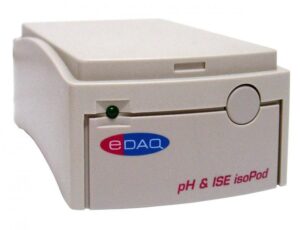
e-corder isoPods (EP353)
e-corder isoPods attach to the Pod ports on front panel of the e-corder unit. They become an extension of the e-corder system and are fully controlled by Chart or PowerChrom software. -pH and ISE isoPod pH meter for recording from pH, ion selective and ORP electrodes -Dissolved Oxygen isoPod a compact dissolved oxygen meter for recording dissolved oxygen using polarographic (Clark) electrodes -Nitric Oxide isoPod nitric oxide meter for recording nitric oxide using polarographic electrodes -Biosensor isoPod for amperometric electrodes and sensors -Conductivity isoPod conductivity meter for recording conductivity of a solution with a two electrode conductivity probe -Thermocouple isoPod temperature meter for recording temperature using most types of thermocouple probes -RTD/Thermistor isoPod temperature meter for recording temperature with RTD or Thermistor probes
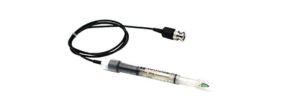
Electrodes, Transducers and Accessories (ET042 pH Electrode)
eDAQ sells a range of electrodes, transducers and accessories. The electrodes include pH, dissolved oxygen, conductivity and temperature probes. These can be used with our isoPods. We also have a range of voltammetric electrodes, including working, reference and auxiliary electrodes, as well as screen-printed electrodes, which can be used with our potentiostats. Electrochemistry accessories include electrochemical cells, as well as our polishing kit, plates, clothes and slurries. The accessories include various cables, switches and adapters for eDAQ products.
Want to know more?
Do you wish to reach out for more information or see how we can help you? Reach out to us by clicking the button below!

